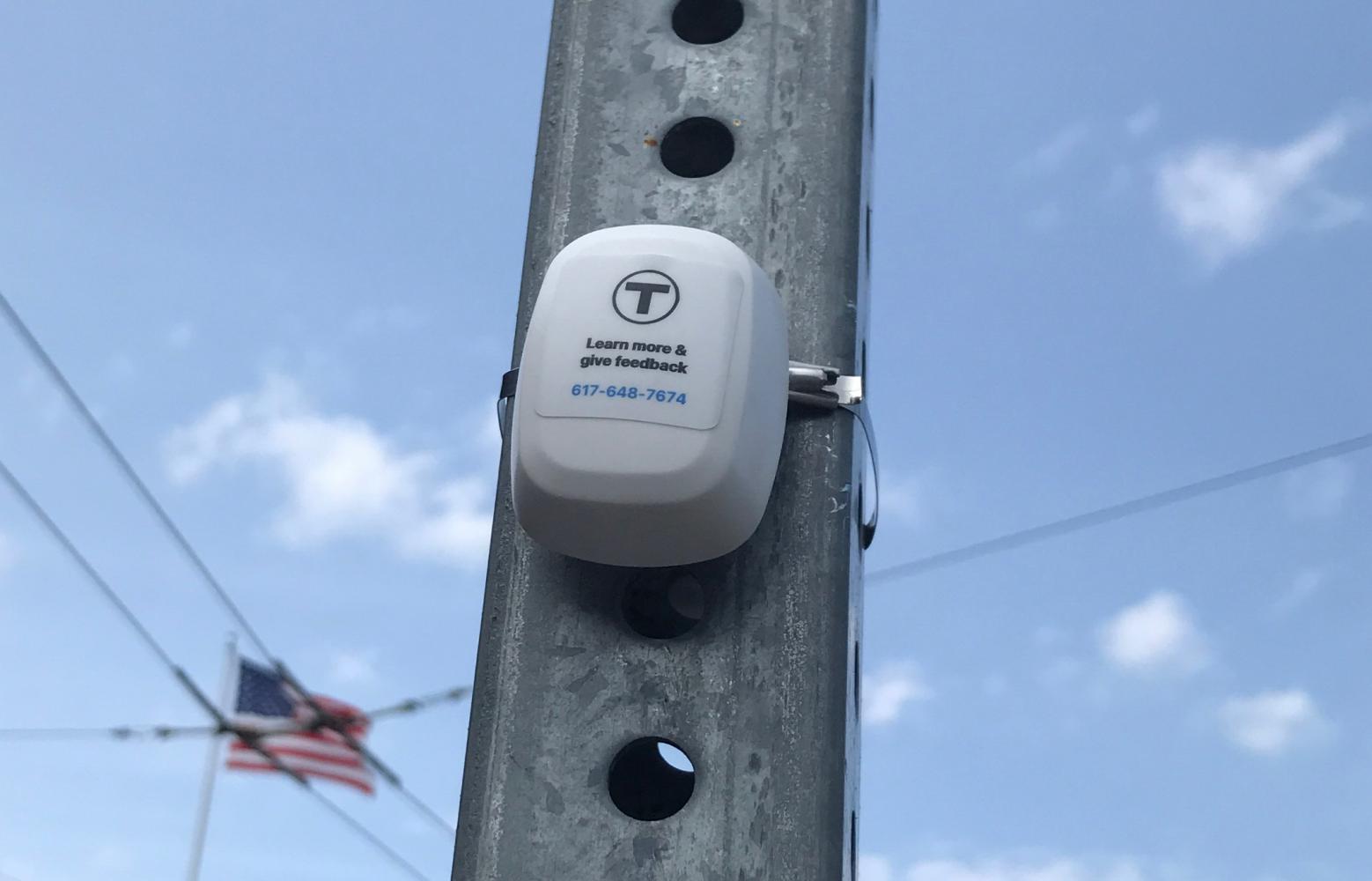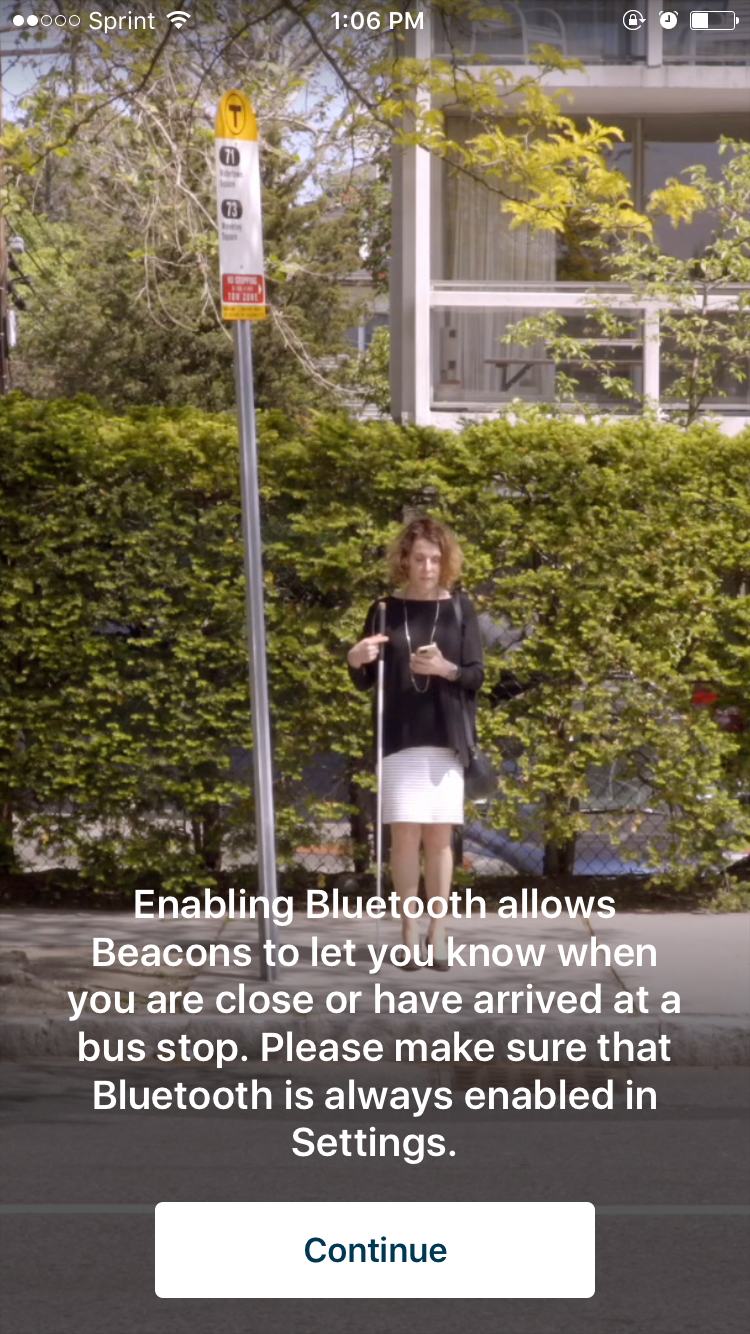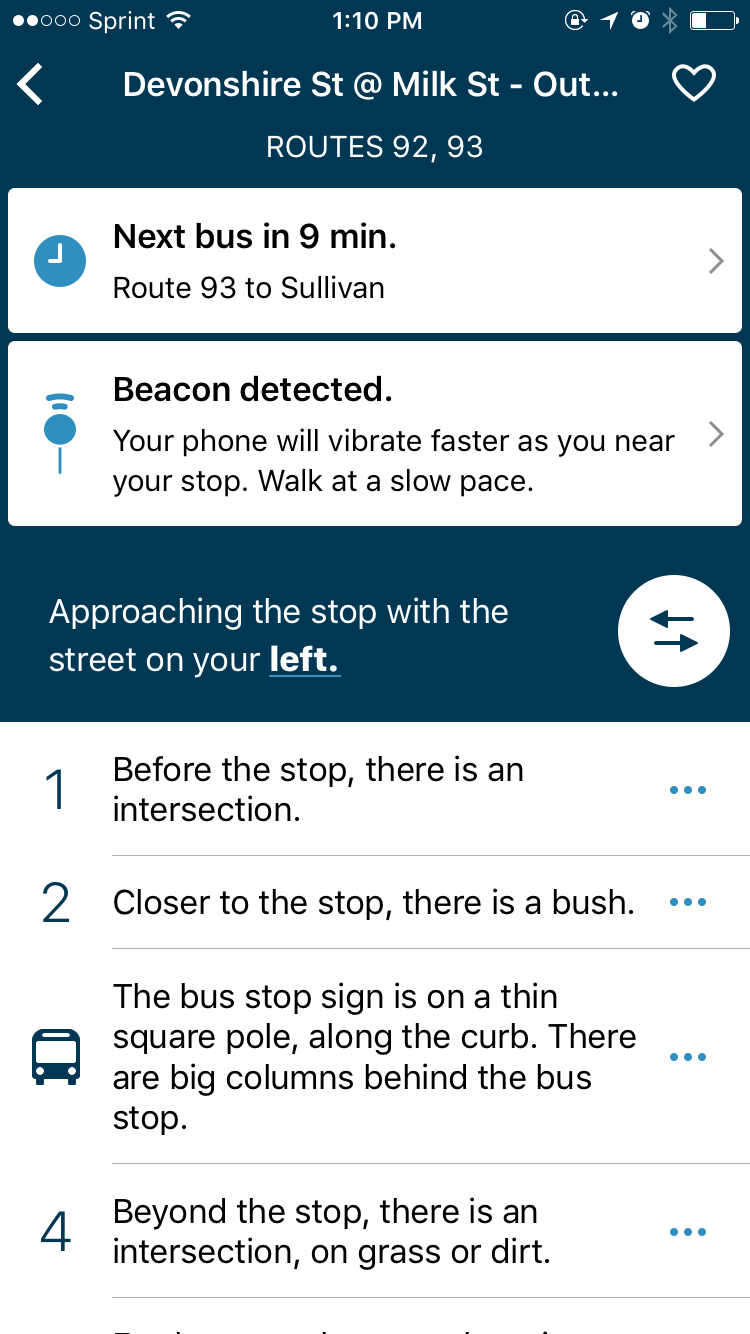MBTA Digital Beacon Information Now Available in BlindWays App
Posted on May 8, 2018
Furthering its dedication to new technologies in advancing System-Wide Accessibility initiatives, the MBTA has fully integrated the data made available through its piloted Digital Beacon Program within the latest version of the BlindWays app on Bus Routes 70 and 71 in collaboration with Raizlabs and Perkins Institute for the Blind.
Through its partnership with Perkins Institute for the Blind, the MBTA piloted the use of Bluetooth "beacons" installed on bus stop signs along Routes 70 and 71. These beacons transmit a signal to BlindWays users, translating into voiceover narration and cell phone vibrations, with vibrations becoming more intense as a user approaches the beacon located at the bus stop.
While the first version of BlindWays assisted users in locating a bus stop within about 30 feet via the use of crowdsourced information and landmarks, the addition of these digital Bluetooth signals allow BlindWays users to more accurately find the exact location of their intended bus stop.
While this beacon technology was previously only available to users taking part in the pilot, this new feature is now fully integrated within the BlindWays app for these select bus stops. The crowdsourced landmark information continues to also be available within the app in addition to the signaled vibrations via MBTA beacon with the hope of making locating a bus stop easier for customers.
Following successful outcomes, analysis of user feedback, and securing funding sources, the MBTA hopes to eventually install 20,000 of these low-energy, digital-signature beacons throughout its system at bus stops, subway stations, and on buses and subways cars upon full completion of the Digital Beacon Program.
Additional goals of the program include better customer communications, such as in-station navigation assistance, and better elevator and escalator announcements, among others.
The Digital Beacon Program will also provide improved data collection for schedules and planning, increased ad revenue, and streamlined internal processes. A set of applications programming interfaces and a software development kit are also intended to be released to the developer community to begin to build this functionality into their apps.
More Information
Media Contact Information
For all queries and comments, please contact:
Recent News on the T
April 9, 2024
April 5, 2024
April 2, 2024
April 1, 2024



